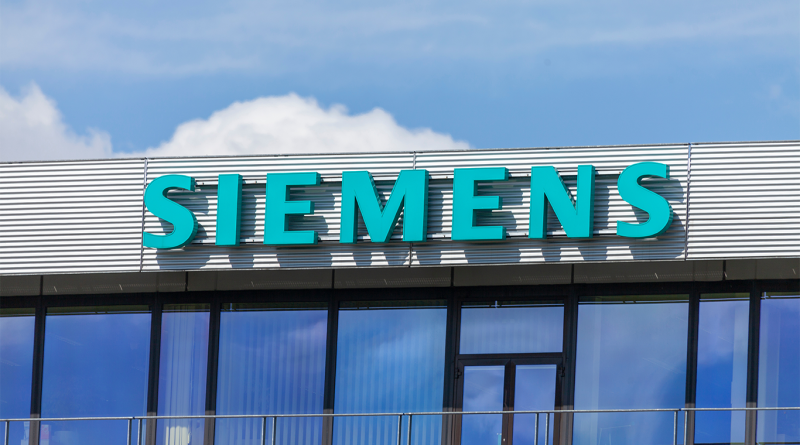How Siemens’ Digital Twin is Redefining Manufacturing for the Next Industrial Revolution
Siemens’ digital twin technology is transforming how industries design, test, and optimize manufacturing processes. A digital twin is a virtual replica of a physical asset, enabling businesses to experiment with different scenarios in a risk-free digital environment. In a CNBC interview, Siemens USA CEO Barbara Humpton explained that this technology allows companies to simulate product performance and production permutations before investing in physical infrastructure. For instance, Siemens’ digital twin was crucial to NASA’s Mars Rover mission, allowing the space agency to model the rover’s operations in conditions that cannot be replicated on Earth. In manufacturing, this technology allows companies to ‘bend metal’ virtually—testing and optimizing designs—before committing physical resources.
This shift from reactive to predictive manufacturing enables better decision-making and optimizes every phase of production. Siemens’ digital twin enhances collaboration between engineers and operators. By using a shared virtual space, teams across different locations can collaborate in real-time, streamlining the design of complex systems and ensuring consistent quality globally.
Digital Twins and the Future of US Manufacturing
Siemens’ digital twin technology is playing a vital role in revitalizing US manufacturing. Barbara Humpton pointed out that Siemens is at the forefront of helping American manufacturers adopt digitalization. This push aligns with Siemens’ ‘smart infrastructure’ initiative, which integrates digital tools into manufacturing to boost productivity, reduce waste, and meet sustainability goals.
A key example of Siemens’ commitment is the $60 million factory in New York. This facility, expected to be North America’s first high-speed rail production site, will leverage digital twin technology to simulate production, ensuring optimal operations long before physical work begins. The plant is part of Siemens’ broader goal to modernize US infrastructure and revitalize its manufacturing base.
With the incorporation of digital twins, US manufacturers can simulate and refine their processes, resulting in reduced downtime, lower operational costs, and more sustainable production. The technology also allows businesses to align their strategies with global trends in sustainability and automation, ensuring competitiveness.
Sustainability and Efficiency Through Digital Twins
Siemens’ digital twin technology is not only optimizing productivity but also driving sustainability. As industries strive to reduce their environmental footprint while increasing efficiency, digital twins enable companies to model and predict energy consumption, emissions, and waste across the production lifecycle. By identifying inefficiencies before production, businesses can make decisions that align with sustainability goals.
Barbara Humpton emphasized that Siemens is using digital tools to help companies achieve sustainable manufacturing. Manufacturers can optimize their operations to reduce resource use and avoid waste, further contributing to lower carbon footprints and compliance with environmental regulations.
Through real-time data collection and simulations, digital twins predict when equipment will need maintenance or upgrades, reducing unnecessary energy use and optimizing production line efficiency.
Expanding the Role of Digital Twins
Siemens is expanding the capabilities of digital twins through the industrial metaverse, a growing ecosystem combining AI, high-fidelity simulations, and extended reality. This innovation creates immersive environments where real-world and digital worlds intersect, allowing manufacturers to collaborate in real-time, design smarter infrastructure, and reduce costly physical prototypes.
Barbara Humpton has highlighted how the industrial metaverse is transforming manufacturing, providing real-time collaboration between global teams. Siemens’ digital twins are central to this ecosystem, enabling companies to experiment with product designs and factory layouts virtually, eliminating the risks associated with physical testing.
This technology is not only making manufacturing more agile but also reducing the costs and risks associated with large-scale projects, such as Siemens’ high-speed rail production facility in New York. The industrial metaverse will continue driving innovation by enabling recombinant innovation, where digital twins of different components can be combined into new systems, further blurring the line between digital experimentation and real-world implementation
The Future of Manufacturing with Human and Digital Integration
As digital twin technology evolves, Siemens envisions a future where human expertise and digital systems work together seamlessly. Barbara Humpton has emphasized that while automation and AI are transforming industries, they serve as extensions of human capability rather than replacements. This shift allows workers to focus on higher-level tasks, such as innovation and problem-solving.
Siemens is also investing heavily in workforce development, spending $50 million annually on US training programs to help employees master digital tools like digital twins. The strategy extends beyond large corporations, making advanced digital tools accessible to small and medium-sized manufacturers enabling a broader segment of the industry to compete globally.
Sources:
